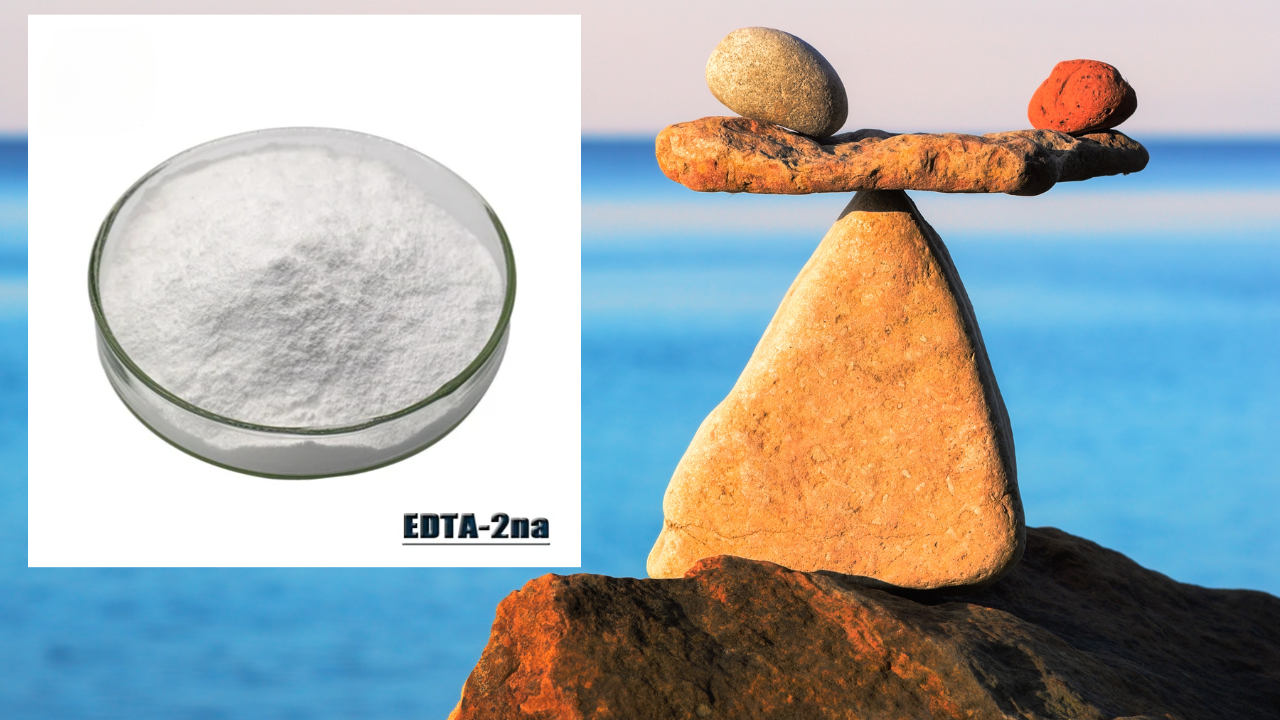Another chemical compound widely used in the formulation of products is Ethylene Diamine Tetraacetic Acid Disodium. Known as edta 2na, it is a powerful chemical that is used to enhance the stability of formulation in industries. Its importance in enhancing product quality and standard has placed it among the compulsory additives on creams, lotions, medicines, soaps, and other products. The increase in requirement of EDTA 2Na is attributed to its role in maintaining the purity of a number of products.
The Chemistry Behind EDTA 2Na
You can define it as disodium salt of EDTA a white crystalline powder with super solubility. Its solubility makes it ideal for use in water based formulations. EDTA 2Na is almost insoluble in alcohol and has limited solubility in acidic environments.
EDTA 2Na’s chelating function makes it adept at binding of ions. They prevent these metals from interfering with formulations and result in fewer unwanted reactions. In comparison, EDTA 4Na is less soluble in water, while EDTA 2Na is more, allowing it to be used in a more versatile range of applications.
Mechanisms of Action: EDTA 2Na in Formulations
The main mechanism of EDTA 2Na’s action is by means of their chelation properties. EDTA 2Na bind up with metal ions, these metals preventing those ions from catalyzing that ultimately leads to product degradation.
EDTA 2Na also affects pH stability. Sensitivity formulations like cosmetics and pharmaceuticals require a stable pH to avoid small changes ruining product quality. EDTA 2Na aids in regulating pH levels and prolonging shelf life.
EDTA 2Na also helps to prevent oxidation and degradation, particularly in products prone to metal-induced deterioration. Its inhibitory action against oxidation allows it to maintain the color, texture, and efficacy of products during their shelf life.
Advantages of EDTA 2Na in Formulations
Formulations can include EDTA 2Na because of several benefits. It improves active ingredient stability. For instance, in cosmetics, it prevents the degradation of color and fragrance, so they remain fresh-looking for longer periods.
Furthermore, the use of EDTA 2Na improves product consistency. This ability to prevent metal-induced reactions allows it to keep a uniform appearance, which augments the overall user experience. Especially in products like creams and lotions, consumer satisfaction depends on consistency such as texture and color.
One significant advantage of EDTA 2Na is its low heavy metal content. EDTA 2Na has an iron and lead content as low as 0.001%, ensuring that final products are safe. This highlights its suitability for consumers where product safety is crucial, driving a safer choice.
From a cost-benefit perspective, EDTA 2Na is a highly beneficial ingredient. It is an economical solution for manufacturers looking for how to extend shelf life and maintain quality, and the enhanced stability it provides to the product is worth the cost.
EDTA 2Na’s Versatility Across Industries.
EDTA 2Na has its uses across various industries. You can use it as a preservative in care products to maintain the reliability of creams as well as shampoos. This is because the ability to bind with metal ions prevents discoloration of the products, keeping their appearance as intended.
EDTA 2Na is used extensively in the pharmaceutical industry to preserve drug potency. It prevents degradation of medications caused by metal, which can lead to medications becoming ineffective over their lifespan. This is especially important for liquid medications and injectables, as stability is critical to patient safety.
EDTA 2Na is also used in industrial cleaners and detergents. It prevents hard water ions from interfering with cleaning agents, providing optimal product performance over the life. With a longer product life, more effective cleaning results are achieved.
Incorporating EDTA 2Na into Formulations: Best Practices
In order to maximize the stability benefits seen with EDTA 2Na, the proper concentrations must be used, the amount depends on the product type. For example, detergents may need different concentrations than cosmetics. The formula will be tested and adjusted to get the best results.
Another important consideration when using EDTA 2Na is maintaining pH levels in balance. Though it is helpful in stabilizing pH, it may not be enough to stabilize a system without other pH regulators.
EDTA 2Na can interact with certain ingredients, so care is required in the formulation. You shouldn’t react anything with other compounds to rule them out for any unwanted reactions. If these interactions are mitigated, your final product will be stable and effective.
Conclusion
Product stability is notably dependent on EDTA 2Na, and it is an important factor across several industries. Formulations such as cosmetics, pharmaceuticals, detergents, and other formulations rely on it to chelate metal ions, stabilize pH, and prevent oxidation due to its ability to do so. Adding EDTA 2Na can create a more consistent product, lengthen shelf life, and make the final product safe.
The future potential for EDTA 2Na to be used in new applications appears bright. This provenability serves for the use as a stabilizer for future innovations in various markets. When you want to increase integrity in your formulations, EDTA 2Na can provide you with a reliable, effective solution.


